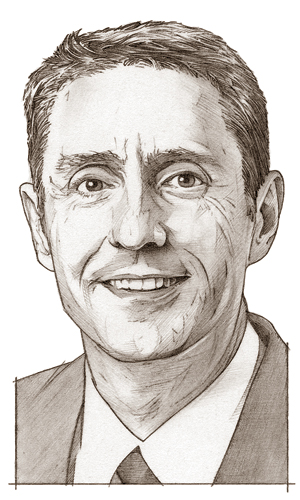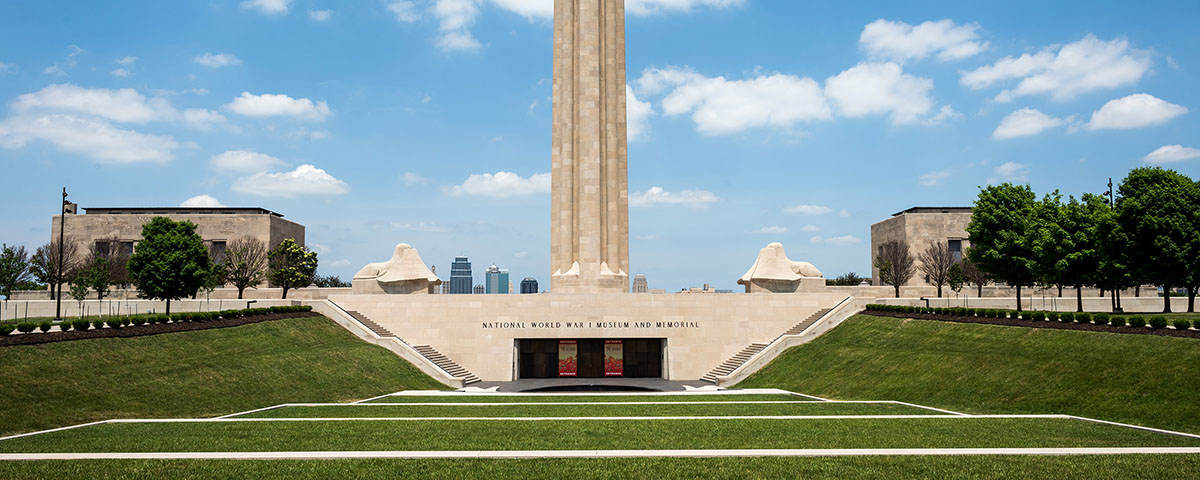
Matthew Naylor, president and CEO of the National World War I Museum and Memorial in Kansas City, Mo., also sits on the U.S. World War I Centennial Commission, which since its establishment by Congress in 2013 has worked to commemorate the nation’s participation in the war. On Nov. 11, 2018, the commission and its partners nationwide will mark the 100th anniversary of war’s end on the 11th hour of the 11th day in the 11th month of 1918. Naylor, a native Australian who holds a doctorate from Curtin University in Perth, recently spoke with Military History about the significance of the war, the centennial, the museum’s mission and its plans beyond November 11.
What about World War I most interests you?
The war is deeply personal, as my grandfather was British and served in France. The conflict also contributed to the development of independence movements and the deconstruction of empires. It was the beginning of a new era and the emergence of a new world in many areas—literature, music, art—and we saw the impact of new technologies. I also have a deep interest in how the world was reshaped and how the war was a fulcrum for clashing ideologies and new ways of thinking.
It is seen as a European war. How do you convey the conflict to American audiences?
One could argue it was World War I that launched the “American Century” and really brought the United States onto the world stage.
World War I is a very complicated story. In the popular imagination it’s messy, its cause is unclear, there were countries involved that aren’t around anymore. We at the museum present the story from a global perspective and from the point of view of all the belligerents. Our introductory film is fantastic and lays out the key players and the contributing factors. Once people learn that, they then begin to move into understanding the conflict and its enduring impact.
What was the significance of the United States’ entry into the war?
There is much to be learned from 1914–16, before the United States was in it. We were, of course, involved in other ways—volunteers, industry, finance. And the arguments leading to the American entry were influenced by the makeup of the country, which has parallels to the conversations today around immigration. At the time German immigrants comprised about 10 percent of America’s population.
We acquired two uniforms—one German, one American—both worn by a Danish man. He was in German-occupied Denmark and served under the German flag. Then he sailed to the States to join his brother. He was probably conscripted and in 1918 went back to Europe wearing an American uniform. That example illustrates the complex nature of immigration and the difficult decisions being made by the United States. Some Army divisions spoke as many as 43 languages.
We still seek to identify what it means to be an American, and that was happening in 1914–16 and in many respects delayed the U.S. engagement in the war. But, of course, when Congress voted on April 6, 1917, there was spectacular growth from a standing U.S. Army of 100,000 to just over 4.5 million. In many respects the nation came together in quite a remarkable way that was defining for the American experience.
What are some standout items in the museum’s collection?
One is the Renault tank, one of only three that remain that were battle-damaged. When this particular tank was brought here, we discovered that inside are the names of mechanics who worked on it in France—and some of them were from Kansas City. So not only does the tank illustrate the evolution in technology, but also it has a strong local connection.
Public relations and propaganda were born in World War I, and our poster collection depicts that. One of my favorites is of a mother with a child, sinking in the water—it was made after the sinking of Lusitania. It’s a powerful, evocative and haunting image.
We also have a collection of gas masks, from gas goggles first introduced in 1915 to the masks they were using by the time the Americans arrived in France. To see them is quite haunting and terrifying.
What would you like to add to the collection?
We collect encyclopedically from all of the belligerents, which distinguishes us from other like institutions that primarily tell the story through the lens of their country or empire. We certainly tell the U.S. story, but that doesn’t start until about halfway through. So we have a great many objects from other countries. About 97 percent of our collection is donated, and we are collecting almost every week. Last year we had about 286 accessions. Each accession could contain one object or as many as a couple hundred. The year 2017 was especially good for us in terms of accessions.
We have been looking for objects from Eastern Europe and the Eastern Front, and we were able to acquire quite a number of Russian objects. We’re also looking for an original World War I aircraft. We don’t have an original—they’re difficult to come by and difficult to maintain, and simply looking after them is a challenge.
How will you maintain audience interest after the centennial?
That’s the existential question—who are we post-centennial? In the last four years we have seen a 64 percent growth in the number of people coming into the galleries. We’ve also had tremendous growth in our online engagement.
We’re having a ceremony on November 11, but our commemoration will certainly continue after that. We have begun to look at such guiding questions as, What are the big themes that we’ll speak to in the coming decade? We’ve brought together museum professionals, military personnel and social historians for workshops to consider it. I’m very excited about what the future is for us.
‘Above all, it’s an honor to have the opportunity to be stewards of the story, to preserve the objects’
We’re also interested in exploring the aftermath of the war, about the troops’ homecoming and readjustment to civilian life. A soldier coming back could be a different person. So what is home? Can you go home again? Through that lens we explore our responsibility to returning veterans and the responsibility of command.
Our work is to remember, interpret and understand World War I and its enduring impact. We want to explore fundamental questions that have application to the current context. How did wartime innovations affect social life as well as military life? The development of independence movements caused people to ask questions about identity—who are you? Issues of migration caused people in the war and postwar periods to ask that, and it is similarly being asked and re-asked today.
We feel very confident about who we will be post-centennial. The audience we know is deeply interested, and we have much to talk about. Above all, it’s an honor to have the opportunity to be stewards of the story, to preserve the objects. MH





